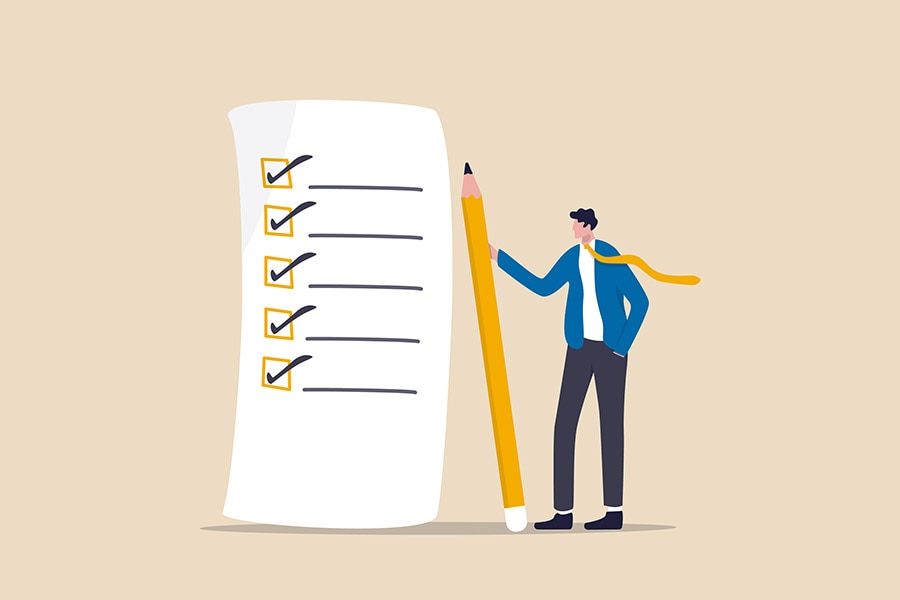
Taxes aren't always something that just happen to you. You actually have a lot more control over the size of your liability in a given year than you may realize—even if you wait until tax time to exercise it.
"As an investor, it's important to take advantage of every factor you can influence, and your tax situation certainly qualifies," says Hayden Adams, CPA, CFP®, and director of tax and financial planning at the Schwab Center for Financial Research. "Taxes are one of those areas where even a little forethought can yield significant savings."
We've already started the new year, but it's not too late to impact your 2022 tax situation. Here are four tax-smart moves you can still make between now and April 18, the IRS filing deadline this year.
1. Consider contributing to a traditional IRA
One way to potentially save on your 2022 taxes and put away money for later is to contribute to a traditional individual retirement account (IRA).
If you qualify, these accounts can give you upfront tax deductibility on your contributions, plus tax-deferred growth of your earnings. For 2022, you can contribute up to $6,000 to a traditional IRA (plus a $1,000 catch-up if you're age 50 and over), and you have until Tax Day to do so.
Because contributions to a traditional IRA reduce your taxable income dollar for dollar, they could be enough to drop you into a lower tax bracket. Given that some gaps between tax brackets are quite large—for instance, the drop from 22% to 12%—those savings can be significant.
Contributing to a Roth IRA, on the other hand, won't lower your taxable income today. But it might help you save on taxes in retirement, depending on your goals. "In some cases, a Roth may make more sense than a traditional IRA," Hayden explains, "for example, if you're in a low tax bracket today but expect to be in a higher tax bracket when you withdraw the money."
2. Consider a SEP IRA, if you're self-employed
As a small business owner, you may be eligible for a traditional or Roth IRA. But you might be able to save even more by opening a Simplified Employee Pension (known as a SEP IRA), if you meet certain requirements.
Like a traditional IRA, contributions to SEP IRAs are made with pre-tax dollars. So, they reduce your taxable income up front, and you won't pay taxes until you withdraw the money. For 2022, you can set aside up to 20% of your net income from self-employment or $61,000, whichever is less. If you have employees, you can contribute retirement savings for them as well—up to 25% of their compensation or $61,000.
You have until the due date of your return (including any extensions) to make contributions and get a tax deduction for 2022.
3. Max out your HSA
Health savings accounts (HSAs) have risen in popularity in recent years to help offset the costs of high-deductible health plans.1 These accounts offer a triple tax advantage: Contributions generally reduce your taxable income, any growth on money invested in the HSA is tax-free, and withdrawals are tax-free as long as they're used for qualified medical expenses.
Some savers may not realize they have until Tax Day to contribute to their HSA for the 2022 tax year. For 2022, individuals can sock away up to $3,650 in tax-free HSA contributions and up to $7,300 for families. If you're over age 55, you can set aside an additional $1,000.
If you haven't maxed out your HSA for 2022, closing the gap before the filing deadline could result in a lower tax bill. "Because HSAs let you roll over your savings from year to year, that money will be available to you if you need it for medical expenses," Hayden says. "And if you don't need the money right now, you can invest a portion of it and potentially enjoy tax-free growth."
4. Don't rule out itemizing too quickly
For 2022, if you're a single filer and your deductions exceed $12,950 (or $25,900 for married couples filing jointly), then itemizing would save you more money than the standard deduction. Just be sure to keep receipts for each expense you're itemizing, and check with an accountant if you're not sure which costs are deductible.
Mortgage interest may be an option for some taxpayers. If you bought your home after December 15, 2017, you can deduct interest on up to $750,000 of indebtedness. And the limit for homes bought on or before that date is still $1 million.
You may also be able to deduct a combined total of $10,000 in property tax, state and local income tax, or sales tax paid in 2022. The sales tax deduction applies to all purchases made during the year, including food, clothing, home improvements, or a new car. If you live in a state with no or lower income tax, sales tax might get you a bigger tax break than the state and local tax deduction.
Finally, medical expenses that exceed 7.5% of your adjusted gross income (AGI) can also be deducted.
Don't delay
With taxes, it's always best to double-check your math and assumptions. If you have questions, talk to a tax professional. Mistakes can quickly erode the potential benefits of tax-saving moves, especially if you miss IRS deadlines. Well before Tax Day, be sure to:
- Determine if a traditional IRA, Roth IRA, or SEP IRA is right for you and how to get the most out of one.
- Check with your employer or healthcare/HSA provider to find out about opening an HSA account if you're part of a qualified high-deductible health plan or increasing your contributions if you haven't hit the 2022 limit.
- Gather any documents, forms, or receipts you'll need to help you decide if you should itemize your deductions.
1A high-deductible health plan is defined as having a minimum annual deductible of $1,400 for individuals and $2,800 for families. The insured can't be enrolled in Medicare, claimed as a dependent on someone else's tax return, or covered by another health plan without a high deductible.
Withdrawals prior to age 59½ from a qualified retirement plan or IRA may be subject to a 10% federal tax penalty. Withdrawals of earnings within the first five years of the initial contribution creating a Roth IRA may also be subject to a 10% federal tax penalty.
The information provided here is for general informational purposes only and should not be considered an individualized recommendation or personalized investment advice. The investment strategies mentioned here may not be suitable for everyone. Each investor needs to review an investment strategy for their own particular situation before making any investment decision.
All expressions of opinion are subject to change without notice in reaction to shifting market conditions. Data contained herein from third-party providers is obtained from what are considered reliable sources. However, its accuracy, completeness or reliability cannot be guaranteed.
Examples provided are for illustrative purposes only and not intended to be reflective of results you can expect to achieve.
Investing involves risks, including loss of principal.
This information does not constitute and is not intended to be a substitute for specific individualized tax, legal, or investment planning advice. Where specific advice is necessary or appropriate, Schwab recommends consultation with a qualified tax advisor, CPA, financial planner, or investment manager.
The Schwab Center for Financial Research is a division of Charles Schwab & Co., Inc.
0223-3PF3

